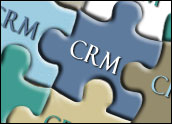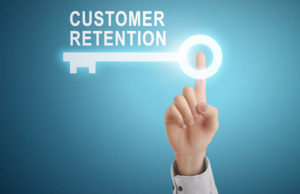
This story was originally published on March 6, 2009, and is brought to you today as part of our Best of ECT News series.
In this age of hype and hysteria, nearly every IT product peddled comes with the dire warning “if you do not buy, you die.” On a few occasions, however, that claim proves true in the biggest, most unmistakable ways.
“It can easily be argued that our current world economic crisis can be partially blamed on poor business intelligence,” Boris Evelson, an analyst at Forrester, told CRM Buyer. “Government and business leaders ignored the information, made decisions based on wrong information, or made wrong decisions based on right information.”
Ignorance Hurts
Few would argue that the price of such business ignorance is more than anyone wants to think about, let alone pay. Nonetheless, here we are, slap dab in the middle of a global economic meltdown trying to stay afloat. Considering the data overload previously on hand in nearly every government agency and business, how is it that we, in toto, still knew virtually nothing?
“One bank CIO recently told me ‘We had the data, but we did not have the information,'” said Evelson, shaking his head.
It’s now long past time to get that information and then move on it — in double-time.
“Like NASCAR, businesses have a ‘need for speed’ to stay in the race,” Ron Hank, senior executive at Cincom Business Intelligence Solutions, told CRM Buyer. “Business intelligence not only gives you the ability to make the right decisions, it also ensures that your decision is made quickly — fast enough to take advantage of the windows of opportunity open to you, and beat your competition to it.”
The Race Is On
That need for speed is not lost on business leaders around the globe. Unfortunately, the world won’t stop spinning long enough to let them catch up.
“Increased adoption of BI is being accelerated by the sheer volume of digital data, variety of information and velocity required for decision-making,” Eric Yau, vice president of business intelligence at IBM Software Group, told CRM Buyer. “For example, every day, 15 petabytes of new information is being generated. This is eight times more than the information in all U.S. libraries.”
“This ocean of data and the scramble to make sense of it is straining financial analysts, business managers, line of business employees, and executives in all sizes of organizations,” explained Yau. “They are grappling with information overload and the rapid pace of change in today’s globally connected economy.”
Despite the overwhelming nature of the task and the breakneck pace, all eyes are on the finish line and the most efficient way to get there.
“Adoption of BI is being driven by a need for speed, accuracy and the hunt for possibilities,” Tammi Kay George, BI strategist at SAS, told CRM Buyer. “Speed in responding to current economic pressures, competitive threats and gaining confidence that your decisions are based on accurate insights is also driving more strategic approaches to BI adoption.”
Forward Thinking
“Don’t get me wrong, BI adoption is being driven by the need to find out basic information as always, like answering what happened and surfacing data via standard Web reports, but BI is also being driven by the need to see what is possible,” said George.
“For example, what will happen to production and delivery time for certain regions if we close this plant?” explained George. “How should we respond to pricing pressures on a particular product line? Which customers are about to jump ship for a lower-cost competitor? What services offer should we make to retain customers that are hearing we’re filing for Chapter 11? How can we organizationally get a quick and consistent baseline and yet also see ahead of the current economic mush — all looking in the same direction? “
“Bottom-line, BI enables that forward view,” concluded George.
Back Up and Get Going
While a forward view is imperative, it is almost impossible to achieve without both a past and a current view of events. “Most organizations have more data than they know what to do with,” Ian Abramson, president of the Independent Oracle Users Group (IOUG), told CRM Buyer. “They now are leveraging this information to turn it into value. Organizations that are not doing this are in danger of becoming economic dinosaurs.”
“This is not the time to understand less about your business; we need to squeeze every efficiency and BI can be an important part of this approach,” stressed Abramson.
Unfortunately, that’s easier said than done.
“For many organizations, answering even the basic historical question ‘what happened’ is a perilous task fraught with disparate data systems, data quality issues and disagreements over data definitions,” said George.
Perilous or no, it’s a path that all businesses, large and small, must now trek.
Running Strategy
Given the multiple urgencies companies are now faced with in this economic crisis, strategizing using BI has to be done on the run. Still, innovative thinking finds its way into the formula.
“Every day, organizations uncover new and innovative ways to leverage business intelligence to gain insight into their customers’ needs, demographics, loyalty, value, satisfaction, retention and much more,” Dan Paladino, industry marketing analyst at MicroStrategy, told CRM buyer. “One common and effective strategy these companies employ is in-depth customer segmentation analysis to develop more focused and well targeted promotions, marketing programs, and communications.
“Another rewarding strategy is using business intelligence to identify those customers with a high probability churn early enough so that their attrition can possibly be prevented,” added Paladino. “By performing detailed pre-emptive churn analysis, companies work to identify customers who may churn, and retain those customers via well-targeted product offers and improved customer service.”
Into the Silos
Innovation is often tweaked to fit the specific “need-to-know” demands of any given industry.
“From a non-profit perspective, business intelligence can help organizations increase customer and donor participation by allowing them to know what events or campaigns were successful — and then utilizing this information for future projects,” Edward Wendling, director of marketing at Advanced Solutions International told CRM Buyer. “Real-time reporting allows for immediate decision-making, whether by cutting or increasing budgets or altering a certain aspect of an event, to ensure the right KPIs (key performance indicators) are being met.”
“In addition, it allows customers and their staff to see the ‘bigger picture’ by comparing metrics such as donor habits, gift sizes and volunteer times,” added Wendling. “Ultimately, BI gives businesses the operational clarity to facilitate greater productivity and accountability.”
BI leverages CRM data in consumer and B2B organizations in new ways too.
“Sentiment analysis, a category within BI, allows businesses to mine through unstructured call center information such as emails or phone logs to get into the hearts and minds of customers,” Emily Mui, BIP product marketing manager at SAP BusinessObjects, told CRM Buyer. “Combine this with predictive analysis, the quantitative approach to understanding customer transactions, and businesses have a new way to help them stay ahead of their customers.”
The lesson to be learned from the in-your-face challenges dealt by this economic disaster? Recovery means first you know it, then you use it. But do it really fast.
Business Intelligence, Part 2: Creativity in Overdrive





















































